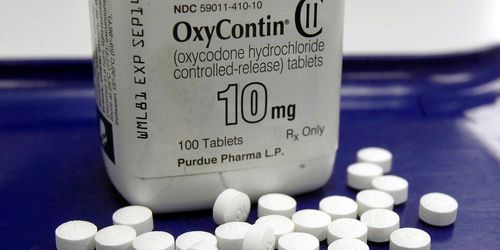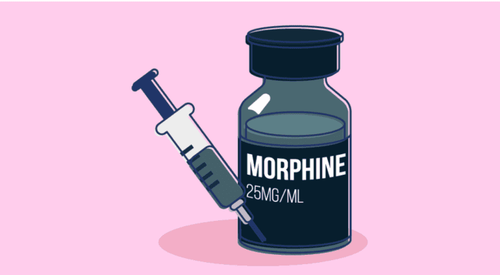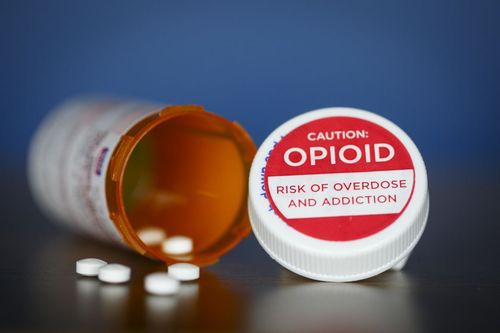This is an automatically translated article.
Opioid analgesics contribute greatly to improved pain control. Opioid pain relievers are relatively safe when used for short periods of time as directed by your doctor. The risk of abuse and dependence is high with prolonged, misdirected opioid use. This can cause opioid addiction just like drug addiction, leading to serious health damage such as respiratory failure and, most seriously, death.
1. What is an opioid pain reliever?
Opioid analgesics, besides being used to relieve pain, also have anesthetic or cough-reducing effects, and anti-diarrheals. Properties of opioids such as morphine act directly on opioid receptors. Opioids include opiates, drugs derived from opium, and even morphine. Other opioids are semi-synthetic and synthetic drugs such as hydrocodone, oxycodone, and fentanyl, and antagonists such as naloxone, endogenous peptide endorphins. The two main groups of opioid analgesics are the natural substances extracted from opium, including opium, morphine, and codeine, and the group of synthetic substances including fentanyl, tramadol, hydrocodone, and heroin.
2. Main types of opioid pain relievers
Morphine and pethidine are opioid analgesics that are effective for moderate to severe pain, especially visceral pain, while codeine is a milder pain reliever suitable for mild to moderate pain. The analgesic effect of this group of drugs also depends on the response of the drug to the patient's body.
Morphine is most valuable for patients with severe pain. In addition to pain relief, morphine also gives patients pleasure, optimism, loss of hunger, sadness or fear. However, if used repeatedly, morphine is addictive and drug-resistant. Common undesirable effects with usual doses are nausea, vomiting, constipation and drowsiness, with high doses causing respiratory depression and hypotension. Pethidine is less effective than morphine, less constipating than morphine, provides quick but short pain relief, so it is often used to relieve pain in moderate and severe pain. Pethidine is also used by injection to induce anesthesia and to support anesthesia. Norpethidine is a metabolite of pethidine that is neurotoxic, accumulates with repeated administration of pethidine, and stimulates the central nervous system such as myoclonus and convulsions. This side effect, coupled with a short analgesic effect, makes pethidine unsuitable for the treatment of persistent severe pain. The effect of codeine is much weaker than that of morphine. The usual dose is less likely to cause many side effects and is less addictive. Codeine is effective for mild to moderate pain, with prolonged use causing constipation. Due to direct action on the cough center in the medulla oblongata, codeine has the effect of reducing cough, drying respiratory secretions as well as increasing the consistency of bronchial secretions. In addition, codeine also prevents cough for patients with insomnia due to dry cough, reduces intestinal motility to help treat diarrhea caused by diabetic neuropathy, contraindicated in acute diarrhea and diarrhea caused by infection.
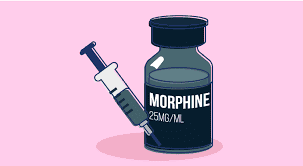
Morphine có giá trị nhất đối với những người bệnh bị đau nặng.
3. Are pain relievers addictive?
3.1. Addiction side effects of opioids Side effects of opioids include itching, drowsiness, nausea, constipation, respiratory depression, and euphoria. In some cases, regular recreational use of opioids leads to addiction. Overdose or used at the same time with other pain relievers is very dangerous, affecting respiratory failure, worse, death. Continuous use of this narcotic pain reliever will result in dependence, requiring an increase in the dose, and abrupt discontinuation can lead to withdrawal symptoms. If you want to stop using it, it will take a very long time and it will be difficult for the patient to experience withdrawal symptoms.
The situation of arbitrarily using pain relievers in Vietnam is much, not following the instructions of the doctor, not complying with the preservation regulations. The process of handling opioid analgesics, specifically morphine, has become a matter of concern because of its serious consequences to human health and life.
For opioid addicts, it's hard for them to resist their urges. These people are always looking for ways to continue using or arbitrarily increase the dose with the aim of getting the illusion of pleasure without worrying about the harmful effects of opioids. Therefore, if addicted, it is very dangerous, increasing the risk of drug shock.
Therefore, opioid addiction is a state of drug abuse for a long time, leading to the same manifestations as drug addiction such as becoming passive, lazy, not paying attention to personal hygiene, disordered. psychological status accompanied by immunodeficiency, insomnia, loss of appetite, weight loss, pupillary constriction and if infected with infectious diseases, earlier death.
3.2. Tramadol Abuse The first opioid responsible for drug abuse is tramadol, abuse of tramadol has been increasing in recent years. Tramadol was the second most common after codeine, found on fake prescriptions when surveyed at drugstores. Tramadol was also the first analgesic (before morphine) to be associated with death with analgesics.
Observation of the course of tramadol use, including addiction side effects and withdrawal symptoms, showed that, despite short-term use of recommended doses, prolonged use occurred in patients pain gone. Therefore, a decision was made to reduce the time limit for prescribing tramadol from 12 months to only 3 months with systematic treatment information for the patient, namely the time to stop the drug as well as the monitoring of the patients. risks even when the initial prescription is prescribed in accordance with tramadol's licensing indication.
3.3. Mechanisms of Addiction of Opioid analgesics When opioids are administered orally or by injection, they bind to opioid receptors in the central or peripheral nervous system and gastrointestinal tract. Pain signals to the brain are inhibited and the body's pain threshold increases, specifically, opioids trigger the release of endorphins, which erase pain sensations, increasing feelings of comfort and pleasure. Therefore, the excitement center of the brain is stimulated, leading to the risk of opioid addiction, especially when the effect of the drug is no longer available, promoting the desire to regain the previous pleasant feeling, so they will come again. this pain reliever. Addiction to opioids for pain relief can occur to any individual regardless of history, age, gender, frequency of use, duration of use, and is not well controlled or well adhered to.
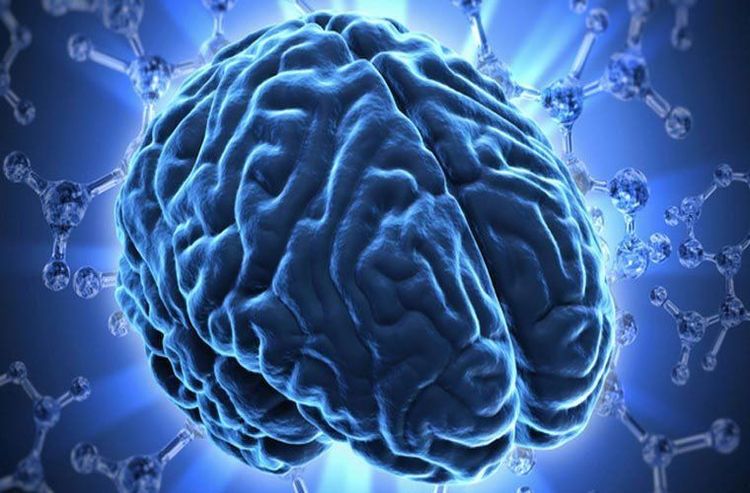
Tình trạng nghiện thuốc opioid để giảm đau có thể xảy ra với bất kỳ cá nhân nào.
4. How to prevent opioid addiction
It is safest to use opioids as directed by your doctor in low doses for short periods of time to control acute pain such as postoperative pain or fractures.
Opioids may not be a safe and effective long-term option for chronic pain due to their addictive nature. Limiting the use of opioids in the treatment of chronic pain is necessary, however, a specialist will consider and select less addictive treatments and have a plan to monitor your progress.
Opioid pain relievers are not used indiscriminately. It is necessary to strictly follow the regulations on the safety of use, storage, and storage for prescription or over-the-counter opioid pain relievers, especially to understand and understand the handling and contact information for the services. drug recall and treatment for expired or unused drugs.
Please follow the website: Vinmec.com regularly to update many other useful information.
Reference articles: suckhoedoisong.vn, msdmanuals.com, hellobacsi.com, canhgiacduoc.org.vn




